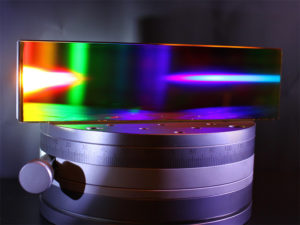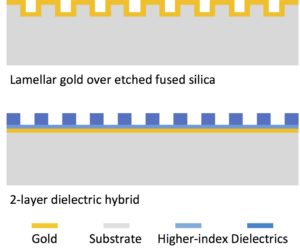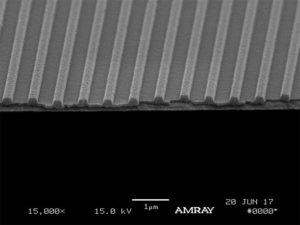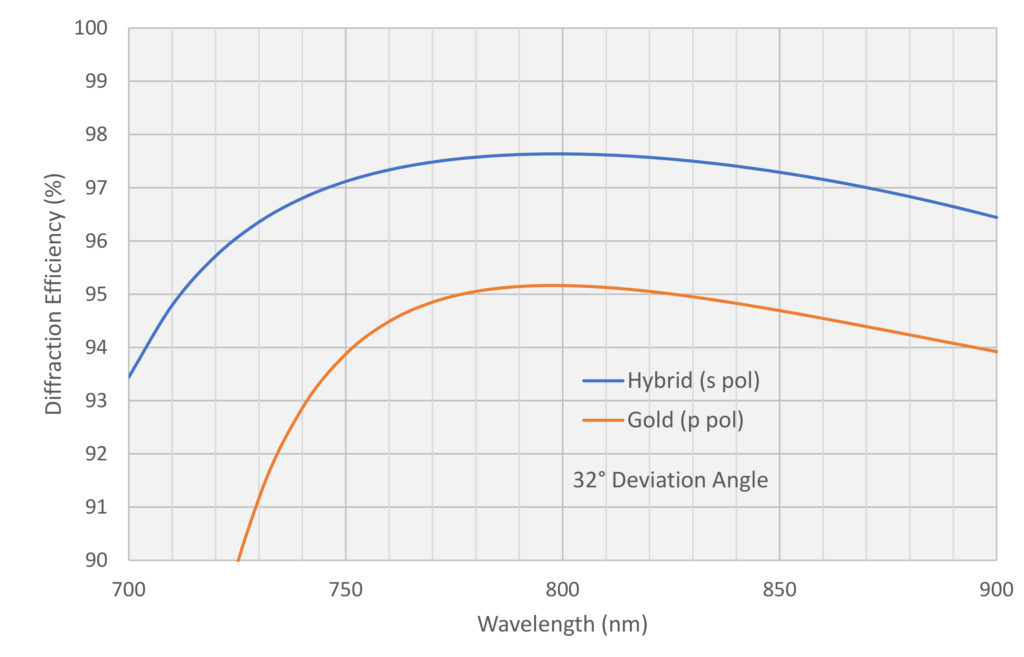Hybrid gratings are a cross between multilayer dielectric (MLD) and gold gratings. Like MLD gratings, they comprise an all-dielectric, partial transmission grating over a highly reflecting mirror; however, hybrid gratings utilize a metallic mirror instead of a dielectric one. As a result, this type of grating can in principle realize the best performance characteristics of both MLD and gold gratings. The broad bandwidth and phase properties of the metallic mirror enable hybrid gratings to achieve very broad spectral widths – equivalent to or even broader than gold gratings – with even higher diffraction efficiency. And with the all- dielectric grating region, the laser-induced damage threshold (LIDT) of hybrid gratings may be higher than that of gold gratings*.

PGL’s gold gratings have established the state-of-the-art in diffraction efficiency, LIDT, and high-average-power handling with their exclusive “metal-over-glass” construction (see figure at left, top). Likewise PGL’s hybrid gratings use only robust dielectric and metal layers, comprising typically one or more high-index dielectric layers over a gold coating on a glass substrate (figure at left, bottom and below). The result is even higher diffraction efficiency than gold gratings and the potential for higher LIDT under certain conditions.
Hybrid gratings can also exhibit equivalent or even broader spectral and angular bandwidths than gold gratings, as shown in the graph at the upper right. In this example the calculated efficiency for a 1480 lines/mm hybrid grating at 54° angle of incidence is compared to that of a typical gold grating, where each design has been optimized for a laser wavelength of 800 nm and a 32° total deviation angle. The example shows that the hybrid grating efficiency can be more than 2% higher than that of a similar gold grating.



The measured diffraction efficiency of a 195 mm x 55 mm hybrid grating is shown below, demonstrating the high degree of uniformity achievable over the full clear aperture.

As of the date of publication of this sheet there has been insufficient testing of hybrid grating LIDT values to specify performance. As this data becomes available it will be reported.
5 Commerce Way, Carver, MA 02330, USA|+1.508.503.1719|sales@plymouthgrating.com